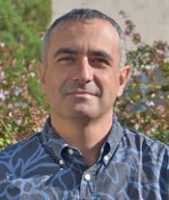Anesthesiology, Author Interviews, Duke, OBGYNE, Opiods, Pain Research, Surgical Research / 29.05.2019
Cesarean Section: Multimodal Program Using Non-Opioid EXPAREL Reduced Pain and Need for Opioids After Surgery
MedicalResearch.com Interview with:
 Ashraf Habib, MD
Chief of the Division of Women’s Anesthesia
Professor of Anesthesiology
Duke University
MedicalResearch.com: What is the background for this study? What are the main findings?
Response: This was a multicenter study conducted in 13 clinical sites in the United States enrolling patients undergoing elective Cesarean-section and receiving spinal anesthesia. 186 patients were enrolled and randomized to receive EXPAREL, a long-acting, non-opioid option to manage postsurgical pain, administered via transversus abdominis plane (TAP) field block, mixed with plain bupivacaine or TAP block with plain bupivacaine alone. A TAP block numbs the nerves that supply the abdominal wall. We presented the data at the 51st Annual Meeting of the Society of Obstetric Anesthesia and Perinatology (SOAP) in Phoenix, AZ.
We aimed to collect clinical evidence that a multimodal postsurgical pain regimen using a TAP block with EXPAREL (bupivacaine liposome injectable suspension) together with regularly scheduled acetaminophen and nonsteroidal anti-inflammatory drugs (NSAIDs) could reduce opioid consumption more so than a standard multimodal pain control approach that combines TAP block with standard bupivacaine, regularly scheduled acetaminophen, and NSAIDs.
(more…)
Ashraf Habib, MD
Chief of the Division of Women’s Anesthesia
Professor of Anesthesiology
Duke University
MedicalResearch.com: What is the background for this study? What are the main findings?
Response: This was a multicenter study conducted in 13 clinical sites in the United States enrolling patients undergoing elective Cesarean-section and receiving spinal anesthesia. 186 patients were enrolled and randomized to receive EXPAREL, a long-acting, non-opioid option to manage postsurgical pain, administered via transversus abdominis plane (TAP) field block, mixed with plain bupivacaine or TAP block with plain bupivacaine alone. A TAP block numbs the nerves that supply the abdominal wall. We presented the data at the 51st Annual Meeting of the Society of Obstetric Anesthesia and Perinatology (SOAP) in Phoenix, AZ.
We aimed to collect clinical evidence that a multimodal postsurgical pain regimen using a TAP block with EXPAREL (bupivacaine liposome injectable suspension) together with regularly scheduled acetaminophen and nonsteroidal anti-inflammatory drugs (NSAIDs) could reduce opioid consumption more so than a standard multimodal pain control approach that combines TAP block with standard bupivacaine, regularly scheduled acetaminophen, and NSAIDs.
(more…)
 Ashraf Habib, MD
Chief of the Division of Women’s Anesthesia
Professor of Anesthesiology
Duke University
MedicalResearch.com: What is the background for this study? What are the main findings?
Response: This was a multicenter study conducted in 13 clinical sites in the United States enrolling patients undergoing elective Cesarean-section and receiving spinal anesthesia. 186 patients were enrolled and randomized to receive EXPAREL, a long-acting, non-opioid option to manage postsurgical pain, administered via transversus abdominis plane (TAP) field block, mixed with plain bupivacaine or TAP block with plain bupivacaine alone. A TAP block numbs the nerves that supply the abdominal wall. We presented the data at the 51st Annual Meeting of the Society of Obstetric Anesthesia and Perinatology (SOAP) in Phoenix, AZ.
We aimed to collect clinical evidence that a multimodal postsurgical pain regimen using a TAP block with EXPAREL (bupivacaine liposome injectable suspension) together with regularly scheduled acetaminophen and nonsteroidal anti-inflammatory drugs (NSAIDs) could reduce opioid consumption more so than a standard multimodal pain control approach that combines TAP block with standard bupivacaine, regularly scheduled acetaminophen, and NSAIDs.
(more…)
Ashraf Habib, MD
Chief of the Division of Women’s Anesthesia
Professor of Anesthesiology
Duke University
MedicalResearch.com: What is the background for this study? What are the main findings?
Response: This was a multicenter study conducted in 13 clinical sites in the United States enrolling patients undergoing elective Cesarean-section and receiving spinal anesthesia. 186 patients were enrolled and randomized to receive EXPAREL, a long-acting, non-opioid option to manage postsurgical pain, administered via transversus abdominis plane (TAP) field block, mixed with plain bupivacaine or TAP block with plain bupivacaine alone. A TAP block numbs the nerves that supply the abdominal wall. We presented the data at the 51st Annual Meeting of the Society of Obstetric Anesthesia and Perinatology (SOAP) in Phoenix, AZ.
We aimed to collect clinical evidence that a multimodal postsurgical pain regimen using a TAP block with EXPAREL (bupivacaine liposome injectable suspension) together with regularly scheduled acetaminophen and nonsteroidal anti-inflammatory drugs (NSAIDs) could reduce opioid consumption more so than a standard multimodal pain control approach that combines TAP block with standard bupivacaine, regularly scheduled acetaminophen, and NSAIDs.
(more…)




























